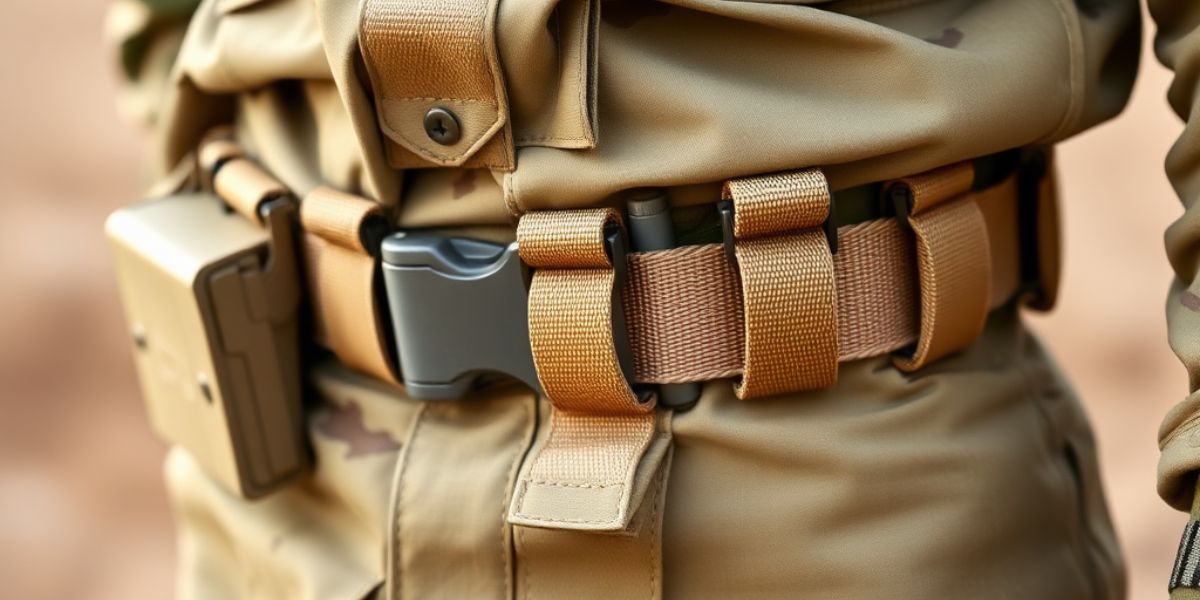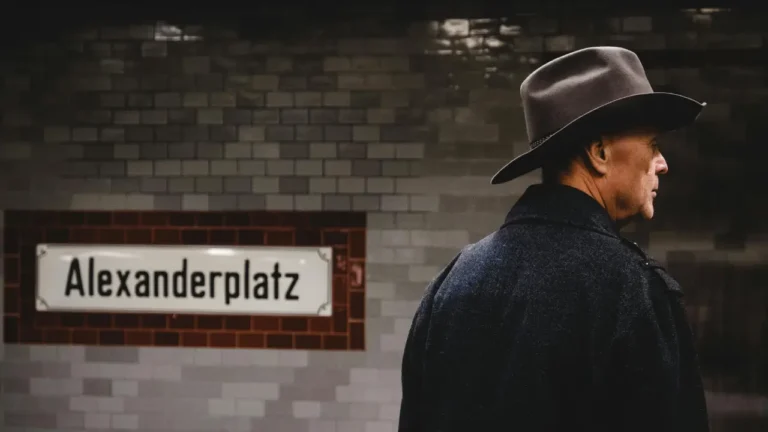You can wear a tan or coyote-brown riggers belt with OCPs. The Operational Camouflage Pattern (OCP) uniform requires specific accessories, and the riggers belt is the standard choice for military personnel. This belt is durable, functional, and matches the overall uniform.
The riggers belt is designed to complement the OCP uniform, offering the strength and functionality necessary for demanding field duties. It meets military standards for durability and performance, making it an essential part of the OCP ensemble. Here’s what you need to know about wearing the correct belt with OCPs.
What Is OCP (Operational Camouflage Pattern)?
OCP, or Operational Camouflage Pattern, is a military camouflage uniform used by the U.S. Army and other branches. It was introduced to replace the Universal Camouflage Pattern (UCP) and is designed to provide effective concealment in a variety of environments, including woodland, desert, and urban areas.
The OCP uniform uses a mix of greens, browns, and tans to enhance blending with different terrains, offering improved functionality and camouflage for soldiers in the field. Key features of OCPs include durability, versatility, and adaptability for diverse operational scenarios.

Why Is OCP the Standard for Military Uniforms?
OCP is the standard for military uniforms because it provides superior camouflage, durability, and versatility across different environments. The Operational Camouflage Pattern was specifically designed to blend into a variety of terrains, such as woodland, desert, and urban areas, making it more effective for modern military operations. Its color palette of greens, browns, and tans helps soldiers remain less visible to adversaries.
Additionally, OCP uniforms are made from durable materials that withstand harsh conditions, offering soldiers the protection and flexibility needed in the field. This design improvement over previous uniforms ensures that personnel can perform in diverse environments while maintaining concealment and comfort, making OCP the ideal choice for military use.
How Does OCP Differ from Previous Uniform Patterns?
OCP differs from previous uniform patterns, such as the Universal Camouflage Pattern (UCP), in several key ways:
- Color Palette: OCP uses a blend of muted greens, browns, and tans, designed to blend into a wider range of environments including woodland, desert, and urban areas. In contrast, UCP relied heavily on a grayish color scheme, which was less effective in many terrains.
- Camouflage Effectiveness: The OCP pattern is more versatile and provides better concealment in diverse environments, whereas UCP was criticized for its lack of adaptability, especially in forested or desert areas.
- Terrain Versatility: OCP performs better in various terrains, making it more suited for both domestic and overseas operations. UCP was intended to be a universal pattern but proved less effective in real-world scenarios.
- Improved Durability and Design: OCP uniforms are made with more durable and comfortable materials, ensuring longevity in harsh conditions. The design also includes more practical features, such as reinforced areas for added strength.
What Types of Belts Are Allowed for Military Personnel?
Military personnel are typically required to wear specific types of belts that conform to uniform regulations. The types of belts allowed for military personnel include:
- Riggers Belt: A durable nylon belt, commonly tan or coyote-brown, used with OCP uniforms. This belt is widely used due to its strength and utility in field operations.
- Web Belt: A standard issue cotton or nylon belt with a metal buckle, often used in dress uniforms. These belts are typically black or green, depending on the branch and uniform type.
- Non-Rigid Tactical Belt: Some branches or units may allow tactical belts for specialized roles, especially in combat or field settings. These belts are typically designed for carrying additional gear.
- Dress Belts: For formal occasions, military personnel may wear leather or synthetic belts that match their dress uniform color and style. These belts usually feature a metallic buckle with the branch’s insignia.
Can You Wear a Black Belt With OCP Uniform?
No, a black belt is not authorized with the OCP uniform. The standard belt for OCPs is a tan or coyote-brown riggers belt, which is specified in military uniform regulations. Black belts are typically reserved for certain dress uniforms and are not permitted with the OCP camouflage pattern. Military personnel are required to follow these guidelines to ensure uniformity and proper appearance when wearing their OCPs.
Can You Wear a Non-Issued Belt With OCPs?
No, you cannot wear a non-issued belt with OCPs unless it meets the military’s specific guidelines. The standard authorized belts for OCPs are the tan or coyote-brown riggers belts.
While some units may allow certain non-issued belts as long as they are the correct color (tan or coyote-brown) and meet functionality requirements, it is generally recommended to adhere to the issued belts unless specific permission is given by a commanding officer. Always check the uniform regulations for your branch to ensure compliance.
How to Choose the Right Belt for OCPs?
To choose the right belt for OCPs, follow these guidelines:
- Check Color Requirements: The authorized colors for OCP belts are tan or coyote-brown. Make sure the belt matches the required color for your branch and uniform regulations.
- Ensure Durability: Select a riggers belt made of durable materials like nylon to withstand field conditions. These belts are designed for long-term use in challenging environments.
- Consider Functionality: The belt should be functional for military duties. Look for features such as quick-release buckles or reinforced stitching to handle gear and movement during operations.
- Verify Regulation Compliance: Confirm that the belt adheres to the specific uniform regulations of your branch. Some units may have particular preferences or additional guidelines on belt specifications.
What Factors Should You Consider When Selecting a Belt?
hen selecting a belt, consider the following factors:
- Material: Choose a durable material like leather, nylon, or canvas based on the belt’s intended use. Leather belts are ideal for formal occasions, while nylon belts work well for outdoor or tactical settings.
- Purpose: Consider the occasion or environment. For example, a dress belt is more suited for formal attire, whereas a riggers belt is ideal for military or tactical use.
- Size and Fit: Ensure the belt fits properly by checking the length. A well-fitting belt should leave enough room to fasten comfortably without excess length hanging.
- Buckle Type: Select a buckle that matches your needs. Traditional buckles are common for formal belts, while quick-release or tactical buckles offer more functionality for fieldwork.
- Color: Choose a belt color that complements your outfit or uniform. For formal wear, black and brown are classic options. In military settings, follow the authorized colors (e.g., tan or coyote-brown for OCPs).
- Comfort: The belt should be comfortable for prolonged wear, especially in situations requiring extended use, like field duty or long events.
What Belt Styles Complement OCPs for Different Occasions?
Different belt styles can complement OCPs depending on the occasion and function. Here are some options:
Riggers Belt for Field and Duty Use
The standard belt for OCPs is the tan or coyote-brown riggers belt. Its durability and strength make it ideal for everyday duty, training, and field operations. It also often includes features like quick-release buckles for added functionality.
Tactical Belt for Specialized Tasks
In certain situations, a tactical belt may be appropriate. These belts, typically made of sturdy nylon, often come with additional pouches or attachment points for carrying gear. Tactical belts are best suited for field missions or tactical roles where utility is key.
Dress Belt for Ceremonial or Formal Occasions
For formal military events or ceremonies, a leather dress belt, typically in black or brown, may be worn with the OCPs when in garrison or for official ceremonies. It offers a more polished look while adhering to military standards.
Web Belt for General Wear
The web belt, a simple nylon or cotton belt with a metallic buckle, can be used for casual or non-combat duties. It provides a functional, streamlined look that works for office settings or less physically demanding activities.
What Are the Most Popular Belt Brands for OCPs?
The most popular belt brands for OCPs are known for durability, compliance with military regulations, and functionality. Here are some well-regarded brands:
Tactical
Known for its rugged, high-quality riggers belts and tactical gear, 5.11 Tactical offers a range of belts that meet military standards for OCPs. Their belts are durable and functional for field use.
Condor
This brand is widely recognized for affordable and durable riggers belts that comply with OCP requirements. Condor belts are popular among military personnel for their strength and reliability.
Propper
Propper produces high-quality belts designed specifically for military use. Their coyote-brown riggers belts are compliant with OCP standards and offer durability for long-term wear.
Blackhawk
Blackhawk is a trusted name for tactical gear and belts. Their riggers and tactical belts are known for strength, functionality, and adherence to military uniform requirements.
TRU-SPEC
Another well-known brand, TRU-SPEC manufactures OCP-compliant belts with a focus on durability and practical design. Their belts are widely used by military personnel.
Tips for Maintaining Belts for OCPs
Maintaining belts for OCPs ensures their longevity and functionality. Here are some tips for proper care:
Regular Cleaning
Wipe down your belt with a damp cloth to remove dirt, sweat, and debris. For more thorough cleaning, use mild soap and water, avoiding harsh chemicals that could weaken the material.
Check for Wear and Tear
Inspect your belt regularly for signs of fraying, especially around stress points like the buckle or ends. Replace the belt if it shows excessive wear to maintain functionality.
Proper Storage
your belt in a cool, dry place to prevent moisture damage. Avoid folding it sharply; instead, roll or hang the belt to preserve its shape and elasticity.
Buckle Maintenance
Ensure that the buckle functions smoothly by checking for any rust or debris. If the buckle becomes stiff, lubricate the moving parts lightly with a silicone-based lubricant.
Avoid Excessive Stress
Do not overload your belt with too much gear, as it can weaken the material or cause it to stretch out over time.
FAQs On What Belt Can I Wear With OCPs
The authorized colors for belts worn with OCPs are tan or coyote-brown, depending on your branch’s uniform regulations.
No, a black belt is not authorized with OCPs. Only tan or coyote-brown riggers belts are permitted for wear with this uniform.
The standard belt for OCPs is the riggers belt, typically in tan or coyote-brown, made from durable nylon material to withstand field conditions.
There is no requirement for specific brands, but popular brands like 5.11 Tactical, Condor, Blackhawk, and Propper are known for making high-quality, OCP-compliant belts.
No, leather belts are not authorized with OCPs. Leather belts are typically reserved for formal dress uniforms, not for field or duty use with OCPs.




